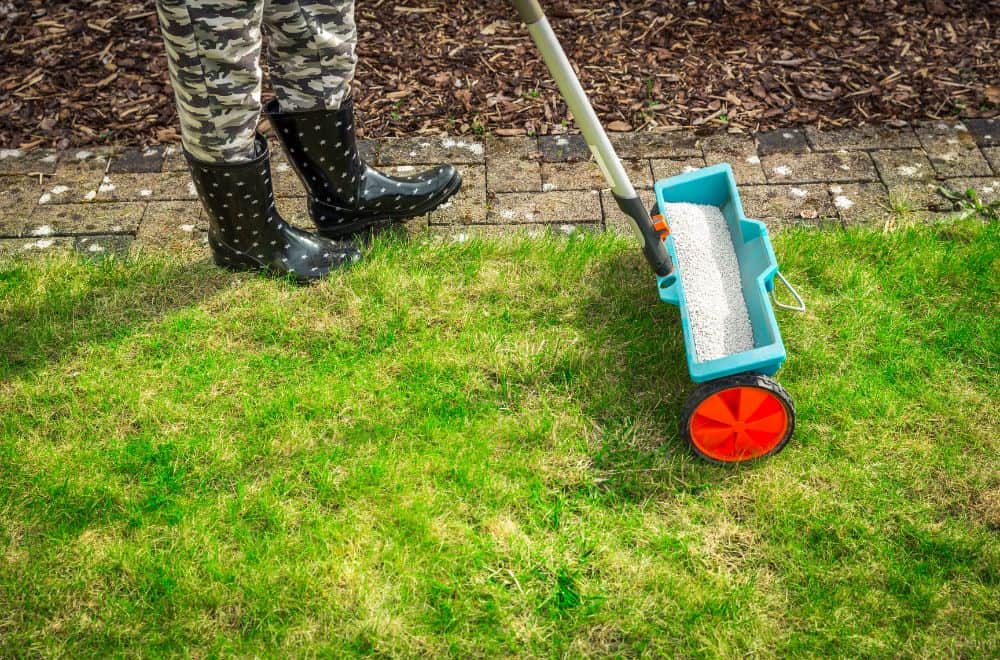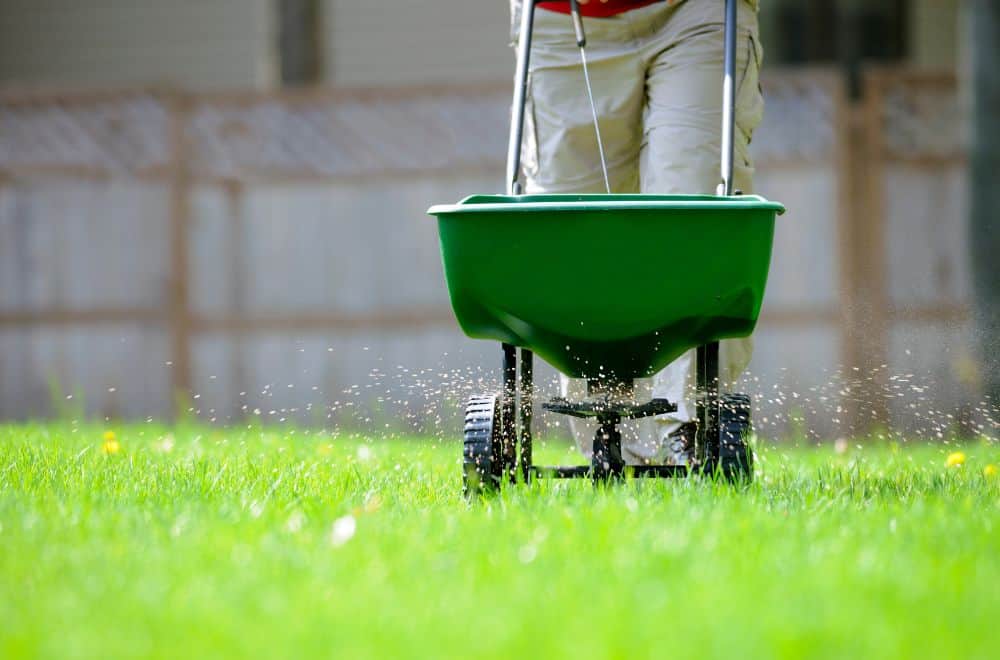Fertilizers, when used properly and adequately, can prove to be a boon for your lawn. On the other hand, fertilizer burns and other over-fertilized lawn complaints are also not new to our ears.
So, what should we do? Do we apply fertilizers? Or, do we not? And if yes, how often? If you’re looking for answers to these questions, you’re at the right place!
In this post, we’ll be discussing how often we should fertilize the lawn and what can happen if we do so too much. Moreover, we’ll also share with you a few smart tips on fertilizing the lawn properly. Read on to find out!
How Often Should You Fertilize Your Lawn?
Every lawn owner dreams of a lawn filled with luscious green grass throughout the year. Fertilizers add the various missing nutrients to the soil such that your lawn grass can grow properly.
So, with a better understanding of the fertilizers, you can keep your dream of flaunting a green and beautiful lawn alive.
You should have a good knowledge of applying the appropriate quantity of fertilizer and when to apply for the best result possible.
The time when you first use the fertilizer should also be noted such that it can be marked as a base for the next time. Sometimes it’s not about how often you use the fertilizers on your lawn, but when you are applying them on your grass.
The best time to apply the first phase of fertilizer to your lawn is when the soil temperature reaches around 55° F, i.e., usually during spring. Your turfgrass also starts growing during this time. If you want to be accurate, you can get a soil thermometer for this purpose.
However, if you see lilacs blooming, that’s also an approximate indication that the temperature is suitable to fertilize the lawn.
After the first application, the second phase of the application is best done after about four weeks. After that, you can then fertilize the lawn every six to eight weeks through to October.
Also, remember that fall fertilizer application is essential as well. Fertilizers that contain higher concentrations of Potassium and Phosphorus promote better root growth and, thus, should be used as fall fertilizers as roots are growing down the soil during the fall.
Fertilizer Choices for Your Lawn
There are varieties of fertilizer available in the market. However, you should only choose the fertilizers that are best for your lawn. They may be either organic or synthetic fertilizers.
Overall, organic fertilizers develop your lawn soil to grow grass in it, whereas synthetic fertilizers are more strong and help your grass grow without adding any benefit to your soil.
Now, if you want an immediate impact on your grass, you can simply opt for a synthetic fertilizer, which is also called quick-release starter fertilizer.
But if you have time and are looking for a long-term solution to improve your lawn soil and grass quality, it is appropriate to use organic fertilizers, often known as slow-release fertilizers.
However, there is also an option to apply synthetic fertilizer immediately and apply the organic fertilizers later on in your feeding phases to strengthen the soil in your lawn.
Understand The Fertilizer Better
Most commercial fertilizers consist of 3 nutrients, namely Nitrogen, Phosphorous, and Potassium (NPK). So, you should have a better understanding of the NPK rating of fertilizer in order to decide what type of fertilizer you need to apply on your lawn for the best outcome.
NPK rating of around 20-5-10 is the best choice for the first application of the season on a standard lawn. This rating means fertilizer consists of 20% of nitrogen, 5% of phosphorus, and 10% of potassium which are the primary nutrients necessary for the grass to grow and foster.
Now, you need to understand what effect the different nutrients have on your lawn grass. Nitrogen helps your grass to grow and go green quickly.
Similarly, phosphorus helps in healthy root development. Phosphorus-containing fertilizers are generally applied during the early period of the season so that roots can grow strongly from an early period. However, remember that too much phosphorus is harmful to the surrounding.
Finally, potassium helps in the overall growth of the grass. NPK rating is higher on a synthetic fertilizer, due to which it shows an immediate effect on your grass. Though organic fertilizers have less NPK rating and show slow progress, they are beneficial to your lawn in the long run.
Drawbacks of Fertilizing Too Often

Yes, using fertilizers can help your lawn grass, especially if it’s nutrient deficient. But that doesn’t mean fertilizing is the solution to every lawn problem you’ll ever face. And most importantly, fertilizing more often than necessary will certainly do more harm to your lawn than good.
Your lawn may be prone to diseases like Brown patch, Pythium, and Helminthosporium due to excessive use of fertilizers. Fertilizer burn is also one of the major side effects of using too much fertilizer around the plant.
When you overuse fertilizers, salts associated with the fertilizer may cause significant obstruction in the intake of water via root, which leads to the improper growth of your lawn grass.
Likewise, if you have some vegetable plants on your lawn, overuse of fertilizer may lead to the excessive growth of your plant, causing various problems. Some plants like tomatoes don’t bloom when grown excessively and cause a delay in production.
Also, your lawn bushes and shrubs might become prone to various diseases if they have dense canopies as they don’t get enough time to dry out.
Fertilizers are quite an expensive item to buy, so overuse of fertilizer not only damages your grass but also will be a complete waste of your money. So, to maintain a healthy lawn, you should always add an appropriate amount of fertilizer slowly rather than add vigorously and too often.
A Few Smart Tips on How to Fertilize The Lawn
Most homeowners choose not to fertilize their lawn just because they don’t know how to. And many even use fertilizers inappropriately, doing more harm than good to their lawn. To your rescue, here, we’ve listed a few smart ways on how to fertilize the lawn best way possible.
1. Know when to water your lawn
Some fertilizers require you to water the lawn before application, whereas other types, such as granulated fertilizers, might need moisture to break down. Always be mindful enough to read the fertilizer label properly and check whether you should water the lawn before or after application.
Moreover, the more your water your turfgrass, the more it grows, and the more your lawn demands fertilizers.
If you have an automatic sprinkler system, you can feed your lawn every six weeks. But if you don’t, waiting two weeks more before the next feeding might probably be the best way to go.
2. Choose Granulated Fertilizers
While spraying fertilizer, it is difficult for homeowners to spray evenly throughout the lawn. Moreover, unlike professionals, they’re not experienced in this matter as well. Thus, in order to avoid all the hassle, it is best for homeowners to opt for granulated fertilizers instead.
Granular fertilizers are incredibly easy to apply using a spreader, and most importantly, you’ll be able to get consistent coverage of your lawn with these.
3. Sweep up any stray fertilizer
Whenever spreading fertilizers, you’re sure to spray some on the sidewalk, driveway, or patio.
So, always make sure to sweep such areas once you’re done spreading.
Letting the stray fertilizer granules get washed away by rain will do no good; you’ll just be aiding environmental pollution as these fertilizers will eventually end up in various water resources.
4. Handle your spreader carefully
Park your spreader on a sidewalk or patio while you’re pouring the fertilizer into it. Many don’t realize that spilled granules during pouring might result in yellow or dead grass patches on your lawn, which definitely won’t look any good on your lawn.
Moreover, if you leave the hopper open while filling up the spreader, you’ll be pouring the fertilizer directly onto the lawn. So, always remember to shut it off. However, to ensure that any of these mistakes won’t occur, you can put a tarp underneath the spreader.
Most importantly, make sure that you walk at a steady pace while spreading fertilizer on the lawn.
Also, you can opt for a broadcast spreader instead of a drop spreader as they disperse fertilizers at a wider distance, thus saving you from a stripped lawn that occurs when the rows are improperly overlapped.
Summary
By now, we know that fertilizers can be harmful to our lawns if not used as directed. So, proper research and a good understanding of fertilizers are essential before applying fertilizers on your own.
If you don’t feel confident enough, you should definitely seek expert advice on what type of fertilizer your lawn requires and how often you should apply it. Moreover, know proper safety guidelines when it comes to handling fertilizers. As we all know, safety first!

Leave a comment